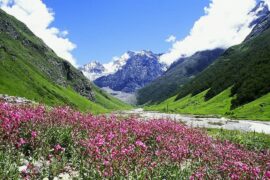World Natural Heritage Sites of India: The 7 Sites You Must Visit
India’s rich natural heritage is a tapestry woven with diverse ecosystems, endemic species, and breathtaking landscapes. Among the nation’s plethora of natural wonders, the 7 World Natural Heritage Sites of India have earned the prestigious designation of UNESCO World Natural Heritage Sites. There are showcasing the country’s commitment to biodiversity conservation. Let’s embark on a journey to unravel the essence of these remarkable World Natural Heritage Sites of India
As of January 2024, the UNESCO World Heritage List comprises 1199 sites worldwide. India boasts 42 World Natural Heritage Sites, among which 34 are cultural sites, 7 are natural sites, and 1 is a mixed site.
These sites attain UNESCO recognition due to their profound cultural, historical, and scientific significance. Let’s delve into the intricacies of the seven Natural World Heritage Sites of India, understanding their how, why, and what.
Here are the seven World Natural Heritage Sites of India that have been declared as UNESCO World Heritage Sites in India.
1. Kaziranga National Park, Assam:
Kaziranga National Park stands as a bastion for the conservation of the Indian one-horned rhinoceros. The World Heritage Site recognition took place in 1985. It provides a sanctuary not only for the rhinoceros but also for the majestic royal Bengal tiger, the Asiatic elephant, the water buffalo, and the Eastern swamp deer. The park’s allure lies not only in its iconic inhabitants but also in its unparalleled natural beauty.
2. Manas National Park, Assam:
Adjacent to the Bhutanese border, Manas National Park, another jewel of Assam. The park boasts a rich biodiversity that includes endemic plant and animal species. Once threatened by poaching and habitat destruction, its inclusion as a UNESCO World Heritage Site in 1985. The recognition elevated its conservation status. From the enigmatic melanistic leopards to the playful river dolphins, Manas National Park offers a glimpse into the untamed wilderness of Assam.
3. Keoladeo National Park, Rajasthan:
Formerly known as Bharatpur Bird Sanctuary, Keoladeo National Park. It enchants visitors with its avian diversity, especially during the winter months when migratory birds flock to its wetlands. Home to over 230 species of birds, including the graceful Siberian crane, this park’s designation as a UNESCO World Heritage Site in 1985 underscores its significance as a vital habitat for avifauna conservation.
4. Nanda Devi and Valley of Flowers National Parks, Uttarakhand:
In the heart of Uttarakhand’s Himalayan splendor lies the Nanda Devi and Valley of Flowers National Parks. This park is famous for its pristine alpine landscapes and vibrant floral tapestry. The ethereal beauty of the Nanda Devi Peak and the kaleidoscopic hues of the Valley of Flowers have captivated adventurers and botanists for centuries. Designated as a UNESCO World Heritage Site in 1988, this sanctuary stands as a testament to India’s natural grandeur.
5. Sundarbans National Park, West Bengal:
Where the Ganges and Brahmaputra rivers converge with the Bay of Bengal, the Sundarbans National Park emerges as a realm of tangled mangrove forests and elusive Bengal tigers. As the largest tidal halophytic mangrove forest in the world, its designation as a UNESCO World Heritage Site in 1987 underscores its ecological significance. From prowling tigers to stealthy crocodiles, the Sundarbans epitomize the raw beauty and untamed wilderness of the Indian subcontinent.
6. Western Ghats (Sahyadri):
Stretching along India’s western coast, the Western Ghats, or Sahyadri, harbor an extraordinary array of biodiversity, earning them the title of a UNESCO World Heritage Site in 2012. With its dense forests, cascading waterfalls, and endemic species. This mountain range serves as a sanctuary for countless plant and animal species. From the silent valleys to the mist-covered peaks, the Western Ghats exude an aura of mystique and enchantment.
7. Great Himalayan National Park, Himachal Pradesh:
It lies amidst the towering peaks of the Himalayas, the Great Himalayan National Park epitomizes the rugged grandeur of the world’s mightiest mountain range. Designated as a UNESCO World Heritage Site in 2014. This sanctuary shelters a diverse array of fauna and flora within its alpine meadows and glacier-carved valleys. From elusive snow leopards to vibrant Himalayan flowers, this park offers a glimpse into the fragile yet resilient ecosystems of the Himalayas.
In conclusion
World Natural Heritage Sites of India stand as a testament to the country’s commitment to biodiversity conservation and environmental stewardship. From the steamy jungles of Assam to the lofty peaks of the Himalayas, each sanctuary offers a unique tapestry of life. it is our collective responsibility to preserve and protect these treasures for generations to come.




Comments are closed.